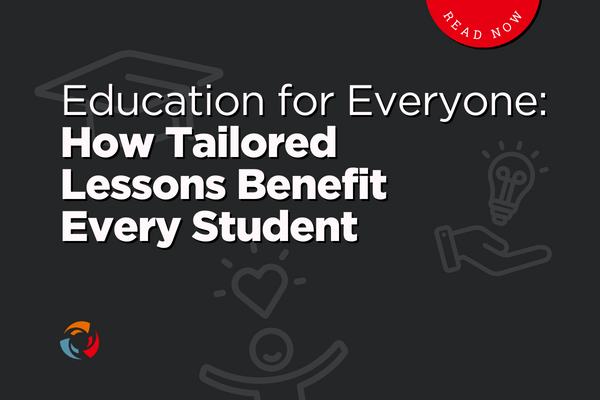
In the pursuit of creating an inclusive classroom environment, educators are increasingly recognizing the importance of designing lessons, as well as instructional videos and support materials, that cater to the diverse needs of all students. While the focus is often on accommodating exceptional students or those with specific learning needs, the reality is that tailored lessons benefit every student, regardless of their abilities or challenges. In this blog post, we’ll explore the principles of inclusive education and how personalized instruction enhances the learning experience for all.
First and foremost, it’s essential to acknowledge that every student learns differently. Whether it’s due to varying cognitive abilities, learning styles, or cultural backgrounds, the one-size-fits-all approach to education is outdated and ineffective. By embracing the principles of Universal Design for Learning (UDL), educators can create lessons that are flexible and adaptable, allowing all students to access and engage with the material in meaningful ways.
When designing lessons for exceptional students or those who require accommodations, educators often employ a variety of strategies, such as providing additional scaffolding, allowing extra time, incorporating multimedia resources, or offering alternative assessments. These accommodations not only support the needs of individual students but also enhance the overall learning environment by making these tools available to all diverse learning preferences and abilities.
Moreover, personalized instruction fosters a sense of empowerment and autonomy among students. When students feel that their unique needs and strengths are recognized and valued, they are more motivated to actively participate in the learning process. This sense of ownership over their education cultivates a growth mindset and instills a lifelong love of learning.
Furthermore, tailored lessons promote deeper understanding and retention of material. By aligning instruction with students’ individual needs and interests, educators can scaffold learning experiences that build upon existing knowledge and skills. This targeted approach allows students to make meaningful connections between concepts and apply their learning in real-world contexts, fostering mastery and competency.
Inclusive education fosters empathy and respect among students. When students see their peers receiving accommodations or support, doors are opened for conversations on differences and similarities that allow students to learn to appreciate and celebrate the diverse talents and abilities that each individual brings to the classroom. This promotes a culture of inclusivity and acceptance, where differences are celebrated as strengths rather than obstacles.
Incorporating accommodations and personalized instruction into the classroom does not require a complete overhaul of existing curriculum or teaching practices. Simple adjustments, such as providing alternative reading materials, offering extended time on assignments, incorporating video-based learning and multisensory activities, can make a significant difference in meeting the needs of all students.
In conclusion, inclusive education is not just about accommodating exceptional students or those with special needs; it’s about creating an environment where every student feels valued, supported, and empowered to succeed. By designing lessons and instructional materials that are flexible, adaptable, and personalized, educators can create learning experiences that benefit all students, regardless of their abilities or challenges. In doing so, we foster a culture of inclusivity, diversity, and excellence that prepares students to thrive in an increasingly complex and interconnected world.

